In ‘After Blue Hour’ at Gallery WM in Amsterdam, we see photographs of the big city when the sun sets and it becomes evening by Loes van Iperen and Eric Chan that evoke a special feeling. The photos were taken in three cities: Hong Kong, Los Angeles, and Amsterdam, over a period of nine years.
I attended the opening and spoke to the makers a few weeks later, when the exhibition had already been running for a few weeks.
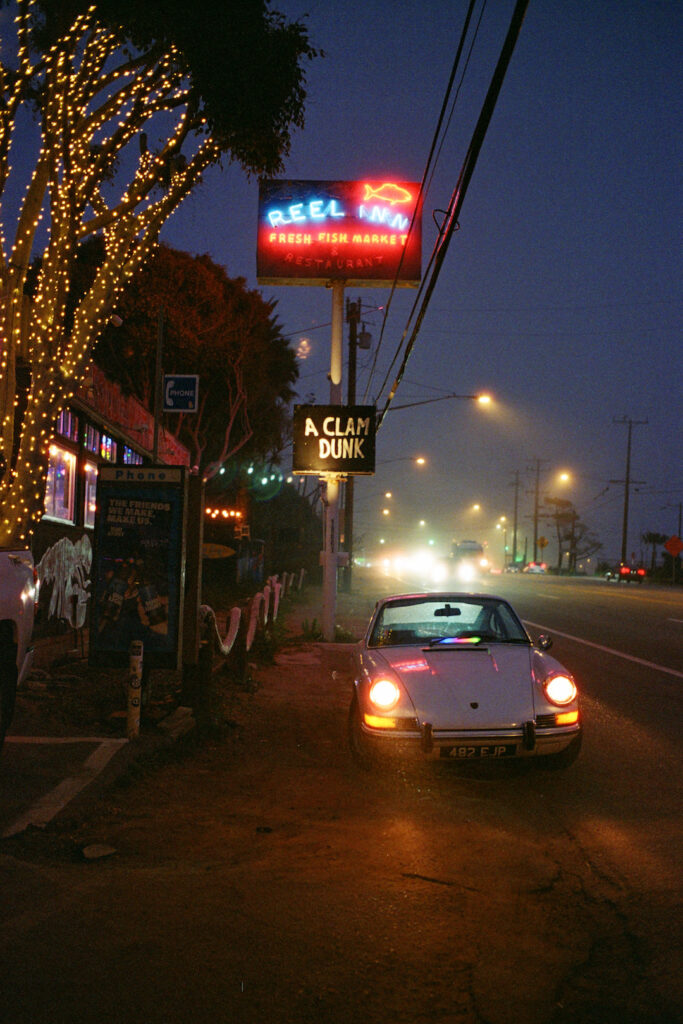
Loes and Eric: “We’re both drawn to the atmosphere of the city as day fades into night. Those few minutes after sunset — the blue hour — when everything softens, quiets down, and takes on a cinematic glow. It’s when the past feels closer, and reality starts to feel a little like fiction.
Nostalgia, memory, night colours, and a sense of familiarity you can’t quite place are at the heart of our images. We like our photos to feel like film stills: the kind of frame you’d pause on, wondering what just happened or what’s going to.”

It’s how memory works
Some photos seem unfinished, especially at the bottom, you see film burns. It doesn’t really belong there according to perfect standards. It’s a statement by the duo. “We don’t see first-of-the-roll shots as mistakes, the film burn adds to the photo and becomes part of the story. Some of our favourite images are the ones we had the lowest expectations for.” They love the unfinished, the surprising, they say. “We treasure the first photo on the roll. It doesn’t come out perfect, but the ‘imperfection’ adds to the whole picture. It’s how memory works: fragments of something that happened once come to mind. Initially vague, and then gradually it becomes clearer.”
There’s also some more abstract work, such as a woman in a hallway with yellow-orange light and a cat in blue hour with beautiful horizontal and vertical stripes in different colors. The cat looks perfect. “The result surprised us too. It’s printed on special Hahnemühle paper.”
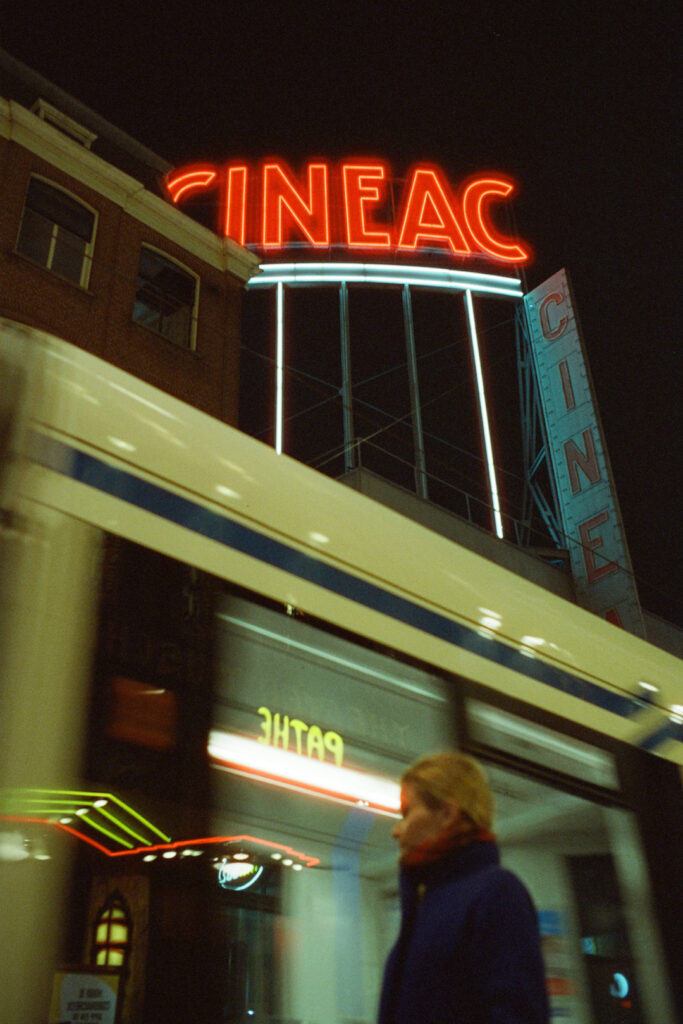
In the Mood for Love
The photos remind me of the film ‘In the Mood for Love’ by director Wong Kar Wai set in Hong Kong (2000). The same big-city atmosphere, where mood and color take center stage. The two main characters, Chow Mo-wan (Tony Leung) and Su Li-zhen (Maggie Cheung), live next door to each other in 1962, while their spouses are having an affair. Eric and Loes: “It’s our favourite film. We completely relate to the atmosphere and tension of the film. You even feel the urge to light up a cigarette too.

We spoke with the film’s set photographer, Wing Shya, about capturing stills of the movie. He said, among other things: ‘Don’t think, just shoot.’ A lot of people prepare too much when they take a photo, which often results in disappointing results.”
Why is this theme important to them?
“Because we believe photography should evoke feelings, even, – or should we say, especially -, when it doesn’t explain everything. We like to leave space for association and suggestion: for memories that suddenly surface, fragments of dreams, or scenes that remind you of a movie you once saw. It’s in that twilight zone between knowing and feeling that the real magic of photography lives for us.”

Do they have a key work? “That’s a difficult question! But if we both have to choose a key image from this exhibition, for Eric it would be the Cineac photo in Amsterdam. It’s a heritage location, instantly recognisable for most Amsterdammers, and the image captures a fleeting, cinematic moment: a tram in motion, the glow of the Pathé Tuschinski signage reflected onto it, a solitary figure in an electric blue coat, all bathed in the colours of the city at night.
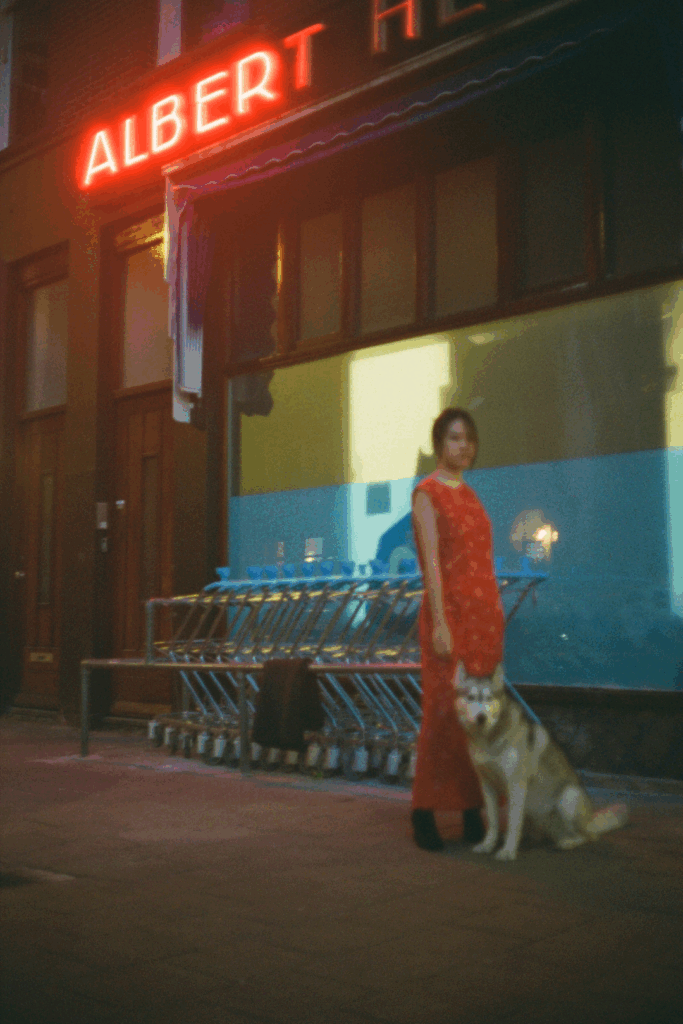
For Loes, it’s the photo of a couple standing in front of minibuses in Hong Kong. Like Eric’s shot, it’s full of visual and emotional layers and iconic city imagery; reflections of neon signs on the bus windows, the couple lost in quiet conversation, a glowing neon sign hovering over them. It’s that subtle tension, the sense that something just happened, or is about to, that gives the image its charge.
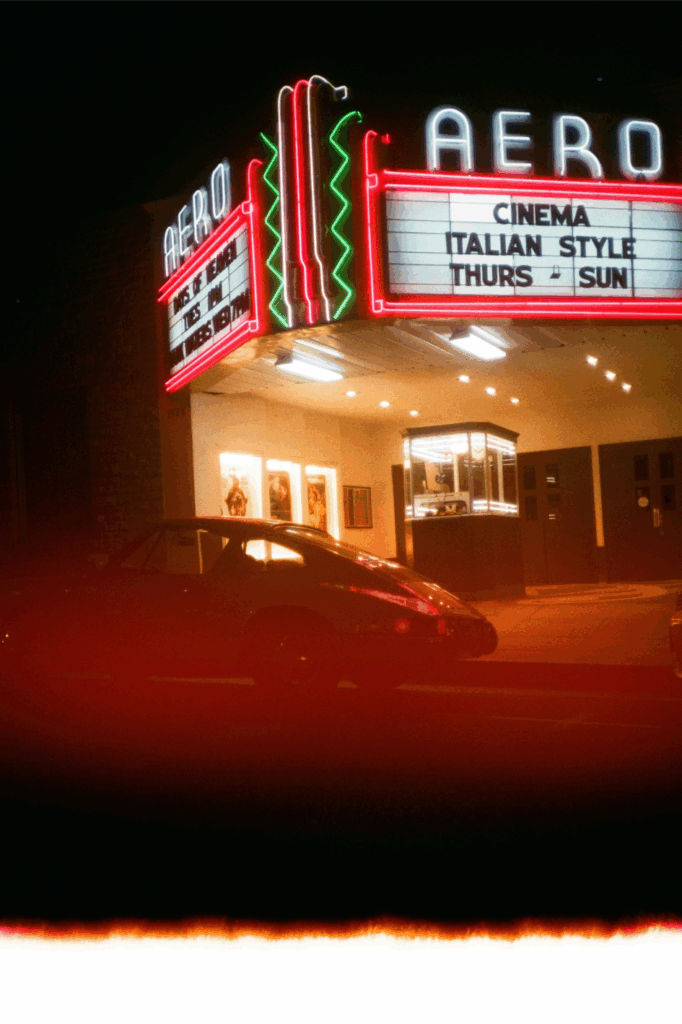
Some places are so often photographed that many photographers avoid them. We don’t, we take it as a challenge: how can we capture something familiar in a way that feels cinematic, emotional, and new? How do we add another layer, of atmosphere, feeling, or composition, so it becomes more than just a snapshot?”
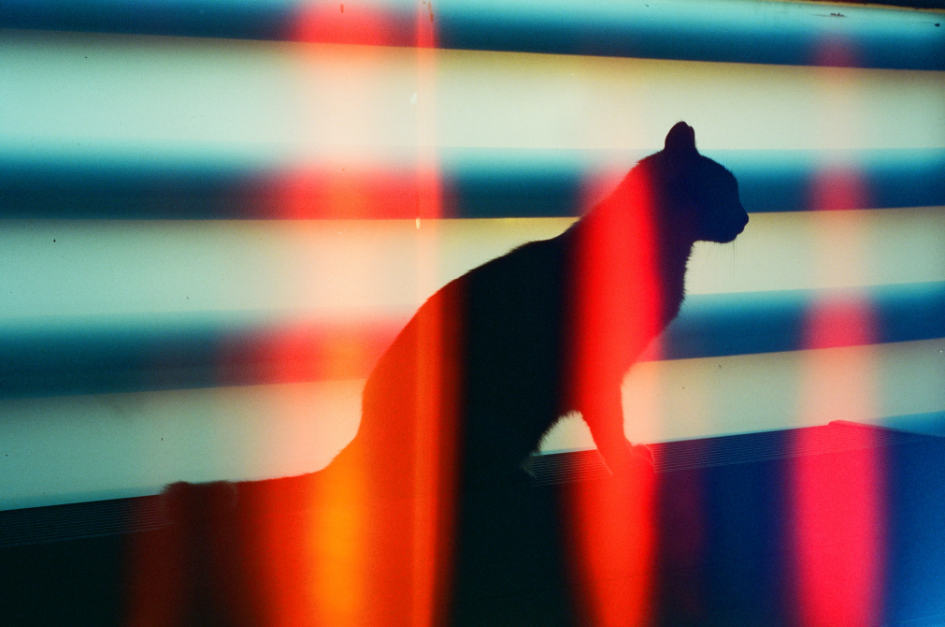
How long have you been photographers? Any training or background?
“We’ve both been shooting film since our teenage years and are entirely self-taught, but it’s only in recent years that we started taking it more seriously as an art form, rather than just snapping for fun: Eric around the mid-2000s, and Loes in 2018.”
Eric grew up in Hong Kong and moved to Los Angeles to study, Loes in Amsterdam, the Netherlands, and moved to Hong Kong in 2014. They found their own path, taking inspiration from photo books, museums and galleries, endless film experiments, and watching (and rewatching) classic films.
“Our collaboration started in 2019, when we met in a photo gallery in Hong Kong. We started talking about film cameras and basically never stopped. After that first meeting, we realised we like a similar aesthetic and started going on long photo walks together. Somewhere between shutter clicks, we realised: we didn’t just want to be partners in photography, but in life too. Since then, our styles have become even more closely entwined.”
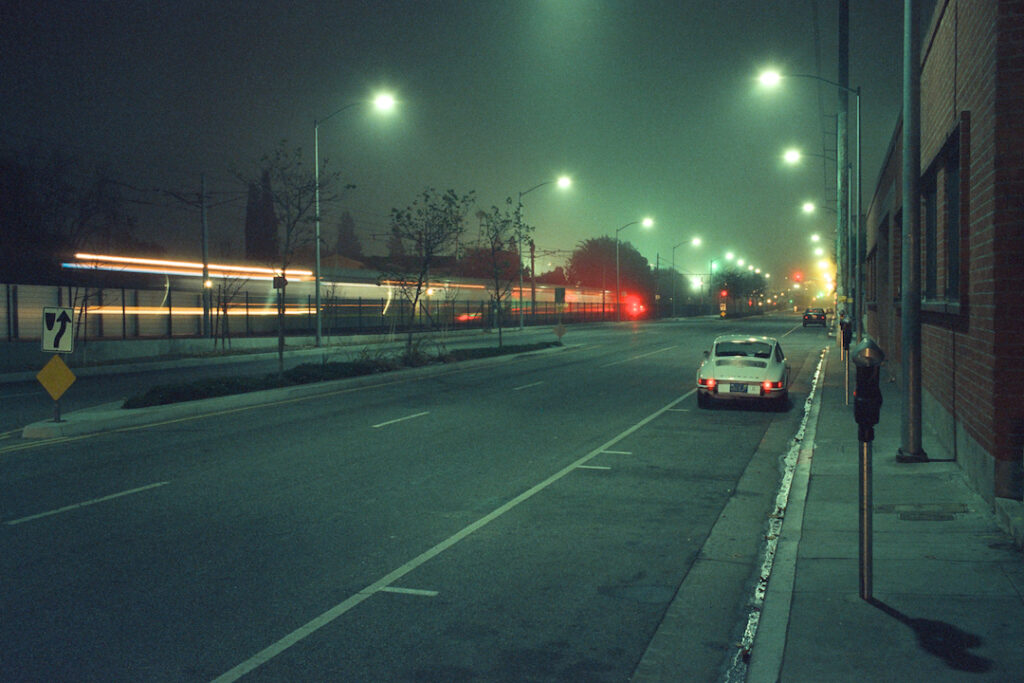
Finally, what’s their artistic philosophy?
“We shoot exclusively on 35mm film, using vintage cameras. Eric has a Leica III from 1934 and a Leica M2 from 1965. As of now, Loes mainly shoots with a Nikon FM from 1984.
We embrace everything analogue has to offer: the light leaks, the softness, the grain.
We’re not after perfection, we’re after emotion. A photograph, to us, isn’t just about what you saw, but about what you felt or were inspired by in the moment you clicked the shutter. That’s the feeling we want to share.”
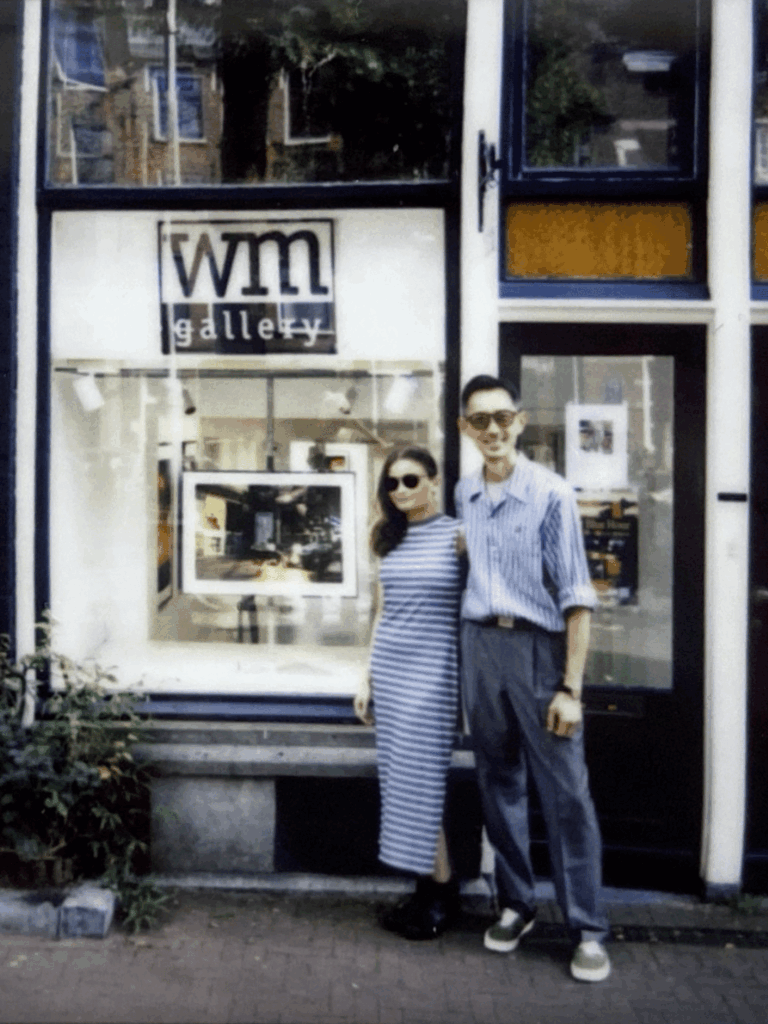
https://gallerywm.com/WP/eric-chan-loes-van-ieperen-blue-hour-05-09-04-10-2025/
https://www.instagram.com/halloloes/
https://www.instagram.com/lazybonecafe/
https://inzaken.eu/index.php/2025/10/01/loes-van-iperen-en-eric-chan-leggen-the-blue-hour-vast/

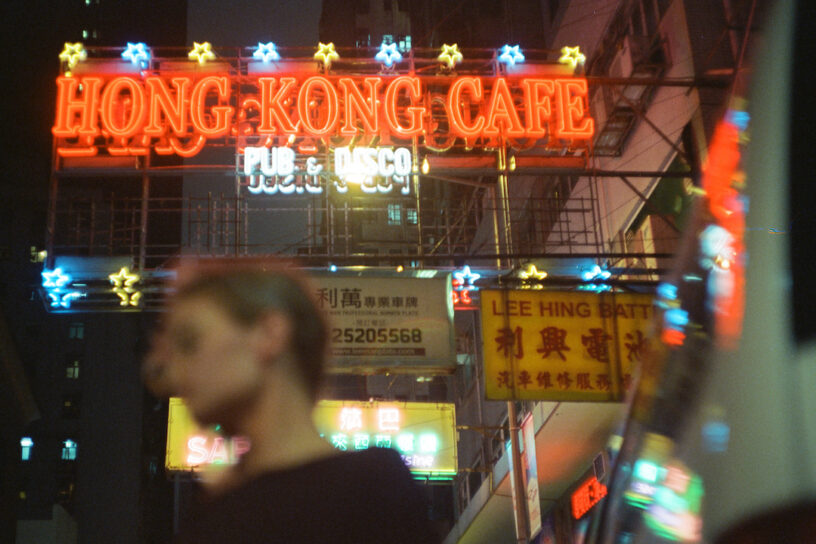






Leave a Reply